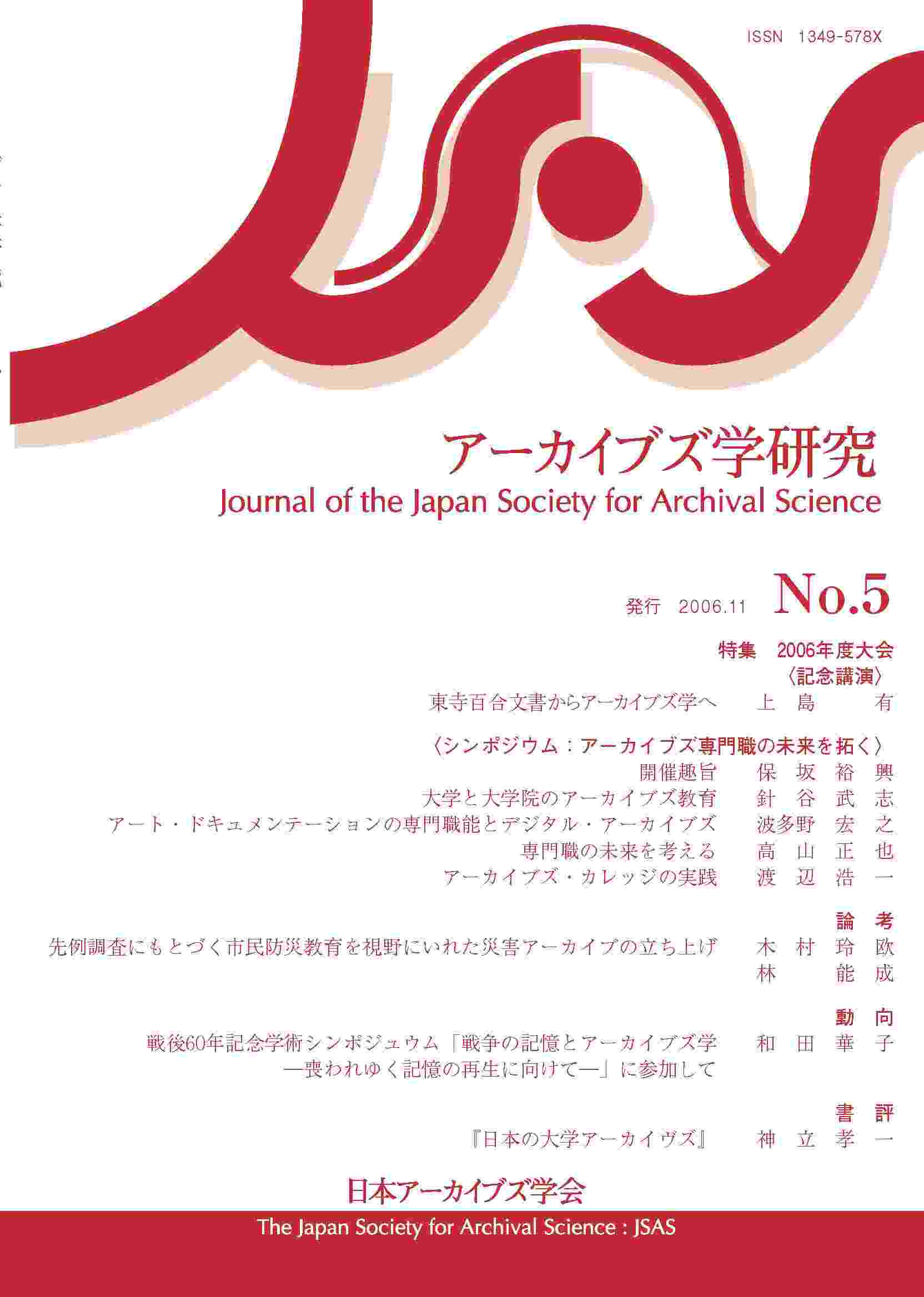Volume 5
Displaying 1-9 of 9 articles from this issue
- |<
- <
- 1
- >
- >|
Special issue: JSAS annual meeting 2006
Special lecture
-
Article type: special lecture
2006Volume 5 Pages 2-50
Published: November 01, 2006
Released on J-STAGE: February 01, 2020
Download PDF (1816K)
Symposium: Pioneering the archival profession in Japan
-
Article type: symposium
2006Volume 5 Pages 52-53
Published: November 01, 2006
Released on J-STAGE: February 01, 2020
Download PDF (1270K) -
Article type: symposium
2006Volume 5 Pages 54-65
Published: November 01, 2006
Released on J-STAGE: February 01, 2020
Download PDF (1823K) -
Article type: symposium
2006Volume 5 Pages 66-73
Published: November 01, 2006
Released on J-STAGE: February 01, 2020
Download PDF (1656K) -
Article type: symposium
2006Volume 5 Pages 74-82
Published: November 01, 2006
Released on J-STAGE: February 01, 2020
Download PDF (1656K) -
Article type: symposium
2006Volume 5 Pages 83-91
Published: November 01, 2006
Released on J-STAGE: February 01, 2020
Download PDF (1722K)
Article
-
2006Volume 5 Pages 94-111
Published: November 01, 2006
Released on J-STAGE: February 01, 2020
Download PDF (3343K)
Research Trend
-
Article type: research trend
2006Volume 5 Pages 114-117
Published: November 01, 2006
Released on J-STAGE: February 01, 2020
Download PDF (1544K)
Book Review
-
2006Volume 5 Pages 120-126
Published: November 01, 2006
Released on J-STAGE: February 01, 2020
Download PDF (1654K)
- |<
- <
- 1
- >
- >|
